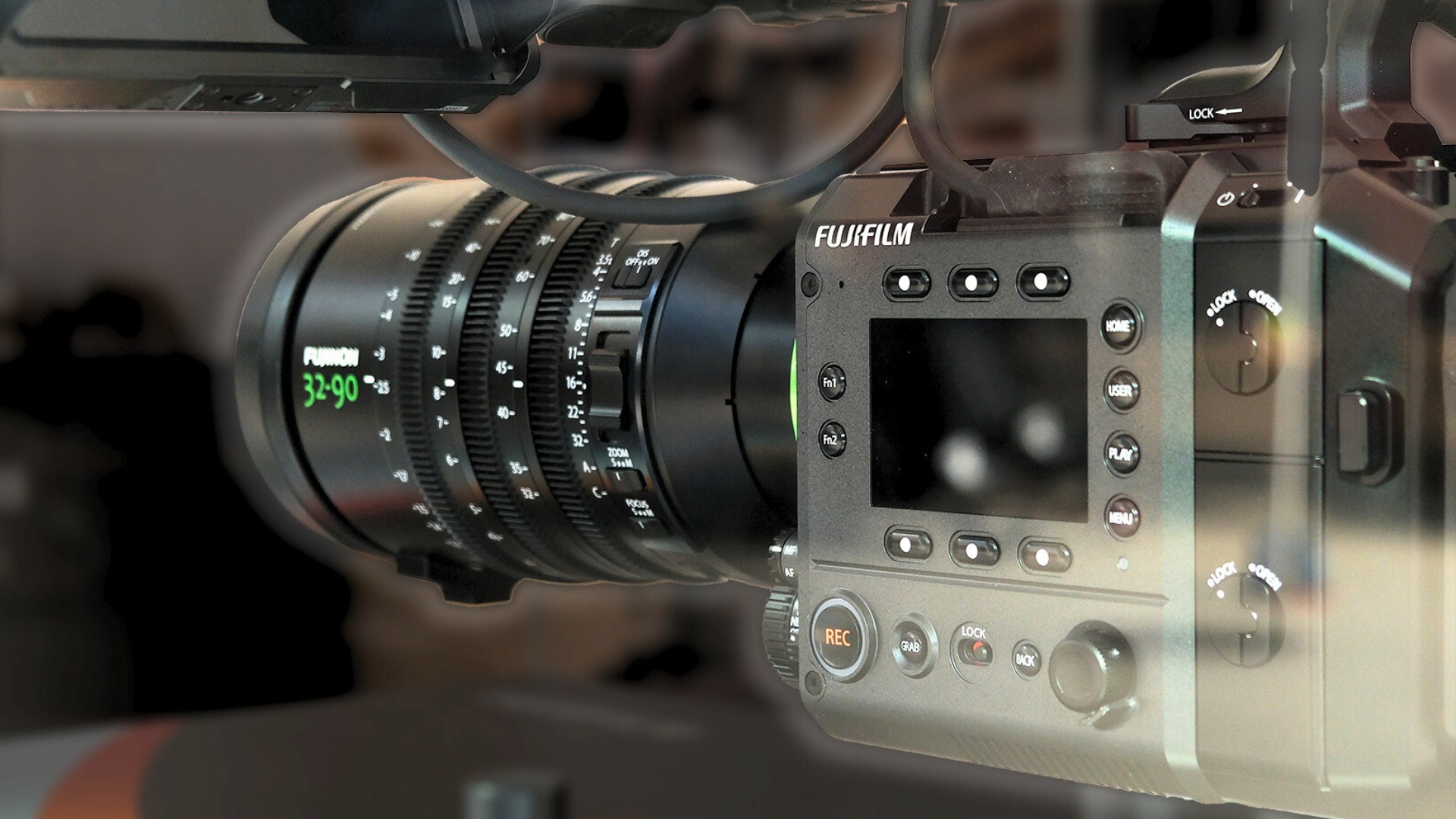
Check out our latest products
FUJIFILM continues to reveal specifications for their upcoming large format cinema camera while maintaining flexibility in development, the GFX ETERNA. During Cine Gear, we spoke to Yuji-san and Makoto-san to learn more about the development process, the release timeline, and other aspects.
At Cine Gear, Yuji Igarashi-san, Division Manager, and Makoto Oishi-san, Product Planning Manager, shared fresh insights into the highly anticipated GFX ETERNA cinema camera. They also explained their gradual announcement strategy and provided additional technical specifications. Please head to our news article here for the complete list of what is new.
Iterative development approach
When asked about their strategy of releasing specifications little by little, Yuji-san explained that FUJIFILM is taking a unique approach to GFX ETERNA’s development. “We are developing the product as we speak. So we have a specification which we are targeting and aiming for, but we want to make sure we deliver all the things we’ve announced,” he stated.
The company is actively implementing features during development while remaining open to user feedback. “We’re actually getting a lot of new requests, and some of them may be possible to be added by firmware, or even accessories could be added later,” Yuji-san noted.

Technical specifications unveiled
Low-pass filter
Breaking from the GFX still photography tradition, the GFX ETERNA will feature an optical low-pass filter specifically designed for filmmaking applications. As Makoto-san explained, “Normally GFX doesn’t have the optical low-pass filter because it’s still photography… but this one is for filmmaking, right? So we want to reduce the scope of aliasing or moiré that might occur while filming.”
Recording formats and codec support
The camera is built on the GFX100 II foundation, supporting multiple recording formats, including Super 35mm and open-gate recording (4:3, 3840×2880). However, internal RAW recording will not be available – RAW capture will require external recording solutions.
Rolling shutter performance
While FUJIFILM remained coy about specific numbers, Makoto-san confirmed that key formats, including Super35mm and open-gate, will feature “very good rolling shutter speed.” Some formats may not support the highest frame rates, but the primary recording modes should deliver professional-level performance.
Film Simulation features
Perhaps the most exciting development is the introduction of custom 3D LUT support. The GFX ETERNA will support loading up to 16 3D LUT files, allowing users to create their own film simulation recipes. Additionally, FUJIFILM plans to develop new film simulations based on 3D LUTs, expanding beyond their traditional 20 film simulation offerings.
This allows FUJIFILM to build on their heritage as a “color company” in the cinema world, giving filmmakers more creative control over how their images look.
Connectivity and remote control
The camera will feature comprehensive connectivity options, including Wi-Fi and Ethernet support. FUJIFILM’s browser-based remote control software will enable full remote operation, controlling not just focus and iris but also accessing some camera functionality remotely.
Open gate and aspect ratio framing support
For open gate recording, the GFX ETERNA will offer seven preset guideline overlays, with a custom option allowing users to set any aspect ratio they desire. This addresses the growing demand for flexible framing options in modern productions, from traditional cinema formats to social media aspect ratios.

Pricing and availability strategy
When pressed about pricing, Yuji-san acknowledged the competitive landscape: “Many things have changed in our industry. More cameras are coming and being introduced. Prices are going down. The competition is very fierce.” However, he confirmed that pricing decisions are still pending as development continues.
Importantly, FUJIFILM emphasized their intention to position the GFX ETERNA as an end-user camera rather than a rental-only product, potentially making it more accessible to independent filmmakers and smaller production companies.

Family of products confirmed
The company confirmed that the GFX ETERNA represents the beginning of a product family. “We’re not thinking this is the only camera we have invested in this category,” Yuji-san stated, suggesting additional models may follow.
Timeline remains firm
Even though the camera is still being developed and improved, FUJIFILM is still planning to release it in 2025. The company also hinted at additional camera announcements throughout 2025, possibly at the upcoming X-Summit in Shanghai.

Industry impact
The GFX ETERNA is FUJIFILM’s entry into the large-format cinema market. It takes on big competitors by combining their advanced sensor technology, color science expertise, and flexible development approach. With its focus on customizable film looks and open development process, FUJIFILM is clearly aiming to be a top choice for filmmakers in an increasingly competitive market.
With a 2025 launch confirmed and technical specs still being improved based on user feedback, I believe the GFX ETERNA is set to make a strong impact in the cinema camera world.
What do you think about FUJIFILM’s strategy to expose a bit more information depending on the development timeline? Let us know in the comments section below.

![[2025 Upgraded] Retractable Car Charger, SUPERONE 69W Car Phone Charger with Cables Fast Charging, Gifts for Men Women Car Accessories for iPhone 16 15 14 13 12, Samsung, Black](https://i1.wp.com/m.media-amazon.com/images/I/61SaegZpsSL._AC_SL1500_.jpg?w=300&resize=300,300&ssl=1)



![[True Military-Grade] Car Phone Holder【2024 Stronger Suction & Clip】 Universal Cell Phone Holder for Car Mount for Dashboard Windshield Air Vent Long Arm Cell Phone Car Mount Thick Case,Black](https://i2.wp.com/m.media-amazon.com/images/I/715PBCuJezL._AC_SL1500_.jpg?w=300&resize=300,300&ssl=1)
![[エレコム] スマホショルダー ショルダーストラップ 肩掛け ストラップホールシート付属 丸紐 8mm P-STSDH2R08](https://i3.wp.com/m.media-amazon.com/images/I/51BMFf06pxL._AC_SL1500_.jpg?w=300&resize=300,300&ssl=1)







